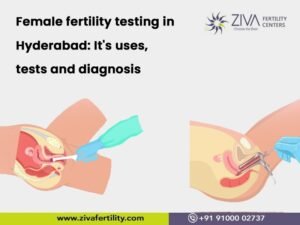What is IUI, and how is it done?
What is IUI, and how is it done?
Where and How long before IUI are the sperm cells collected??
Where and How long before IUI are the sperm cells collected??
Typically, samples are collected in sterile collection containers by ejaculation, but collection condoms for this purpose are also available. Most clinics expect semen to arrive within half an hour after ejaculation, about the time of liquefaction, so if a person lives close enough, samples can be collected at home. If not, please settle down in the clinic, bathroom or any private place. There is a delay between the washing of the semen sample and the insemination. The length of time depends on the irrigation technique used (it takes 30 minutes to two hours) and the clinic’s schedule. Most doctors will perform IUI after washing the sperm as soon as possible.
When is the best time for IUI?
When is the best time for IUI?
Ideally, IUI should be performed within 6 hours of ovulation. However, some doctors believe that the chances of success are higher when IUI is done before ovulation, as the sperm waits for the egg rather than the egg waiting for a sperm. When timing is based on hCG injection, IUI is usually completed after 24 to 48 hours. The typical time for a single IUI is approximately 36 hours after hCG, although some are performed 24 hours, and some clinics report better results when IUI is performed 40-42 hours after hCG. If two IUIs are scheduled, there will usually be 12 hours between 24 and 48 hours after hCG.
Some reports do not show an increase in the success rate of IUI twice, but other reports indicate that it can increase the success rate by 6%. Some doctors determine the duration of IUI based on the natural surge in LH. In this case, IUI once in 36 hours is the norm, but IUI in 24 hours is also ubiquitous because ovulation maybe a little earlier. When two inseminations are planned, they are usually scheduled between 12 and 48 hours after the increase is detected. The egg can only survive for a maximum of 24 hours after being released.
What is the success rate of IUI?
What is the success rate of IUI?
The success rate will vary based on the couple’s original diagnosis and the number of IUI cycles. The pregnancy rate per insemination cycle is 15-20%. In couples undergoing three cycles of IUI, the pregnancy rate can reach 30-50%. The use of fertility drugs, such as clomiphene citrate, tamoxifen, or injectable gonadotropins, can increase the chance of pregnancy.
The pregnancy rate for clomiphene/tamoxifen is about 15%, and the pregnancy rate for injection/IUI is about 20-25%. Still, these rates depend on age and are significantly lower in women over 35 years of age. The multiple pregnancy rate of clomiphene is about 5% or tamoxifen (mainly twins), but the use of injectable gonadotropins (some may be higher-order multiples, that is, triplets or more) increase to about 20- 25%.
How does IUI feel?
How does IUI feel?
Most women think that IUI is relatively painless, the same as a Pap smear. There may be some cramps afterwards due to ovulation and not IUI. The catheter usually doesn’t feel much because the cervix is already slightly opened for ovulation; a poorly timed IUI can cause further discomfort in the cervix.
What does “washing sperm” mean?
What does “washing sperm” mean?
Sometimes, it is also called sperm preparation or spin. The washing technology of almost all standard samples is to mix the liquefied semen with a sufficient washing medium and then centrifuge. A centrifuge is a machine that separates materials of different densities through high-speed rotation.
The supernatant is discarded, and the sediment (the sperm-rich part) is resuspended in an additional washing medium. This process can be repeated up to 2-3 times. In the last wash, the pellet was resuspended in 0.5 cc medium, loaded into a syringe, and sent to the uterus.
The “Sperm Rise” or “Swim-up” technique is a technique in which 2 to 5 cc of medium is carefully spread on 0.2-0.5 cc of semen. Motile sperm “swim” in the culture medium. After some time (30-90 minutes), carefully collect the medium (containing motile sperm) and centrifuge. If necessary, put a fresh medium on the semen again to collect more sperm.
The discontinuous gradient centrifugation technique uses a concentrated liquid phase to separate sperm from semen and debris. Different commercially available compounds can be used. Semen is deposited on top of this liquid and centrifuged. Motile sperm migrate to the bottom of the tube and are used for IUI after further washing.
How long can washed sperm live?
How long can washed sperm live?
Current research shows that cleaned sperm can survive 24 to 72 hours; however, it loses efficacy after 24 hours. Another problem with IUI is that sperm can continue to swim through the fallopian tube, so the ideal window is 6 to 12 hours after the egg is released; there is a more significant margin before ovulation than after ovulation’s vitality is shorter. Sperm can survive in fertile mucus for up to 5 days, so combining IUI with intercourse can provide better coverage.
How long must a man stop sexual intercourse/ejaculation and store sperm before IUI?
How long must a man stop sexual intercourse/ejaculation and store sperm before IUI?
How long can I have sex after IUI?
How long can I have sex after IUI?
Will sperm fall out?
Will sperm fall out?
Once the sperm is injected into the uterus, it will not fall off. However, humidity may increase after the operation because the catheter will loosen the mucus in the cervix and flow out. Some doctors will insert a cup around the cervix to prevent leakage, but most doctors will not.
How many follicles are my best chance of getting pregnant?
chaine coque telephoneelfbar vapeelf bar ultracool phone cases
How many follicles are my best chance of getting pregnant?
According to different studies, 3-4 follicles give a person the best chance of pregnancy, and more follicles will only increase the risk of multiple births. The United States has a higher rate of multiple births, so three is more likely to be the correct answer.
What is the sperm count required for IUI?
What is the sperm count required for IUI?
The number of sperms greater than 1 million seems to be a necessary condition for success. When the number of inseminations is less than 5-10 million, the conception rate will be significantly reduced.
If there is no question of sperm count, does IUI make sense?
If there is no question of sperm count, does IUI make sense?
IUI can help solve the Clomid cycle of cervical mucus problems, and regardless of the number of sperm, IUI will increase the chance of success of the injection cycle. If you did not succeed in sexual intercourse, then it makes sense to try IUI. It should be noted that during sexual intercourse, only the best and most potent sperm can pass through the cervical mucus and enter the uterus and fallopian tubes upward. With IUI, more sperm can be used for fertilization.
How many IUIs should I test before IVF?
How many IUIs should I test before IVF?
It depends on what you can afford and the medications you are taking. Before switching to injections, Clomid can be used for 3-4 IUI, and then injections can be used for 3-4 cycles. If after four good ovulation cycles and timely IUI injections are still unsuccessful, it is time to consider IVF.
Can I do IUI at home?
Can I do IUI at home?
IUI should not be performed at home without medical care. Supervision, because the sperm must be washed to prevent infection, separate them from the semen. Vaginal insemination can be done at home, but it is not more successful than sexual intercourse.
Is bleeding after IUI common?
Is bleeding after IUI common?
This happens very rarely, but it is not uncommon. If the doctor has difficulty reaching the cervix, some bleeding is more common. Some women also experience light bleeding during ovulation.
https://www.high-endrolex.com/34
How long does implantation occur after IUI?
How long does implantation occur after IUI?
Implantation usually occurs 6 to 12 days after ovulation, which is the correct time.
How much does IUI cost?
How much does IUI cost?
How big is the follicle?
How big is the follicle?
Many doctors monitor follicular development during the IUI cycle. Most are triggered when the dominant follicle is within a specific size range. Although there are always some differences in doctors’ preferences, the standard is 20-24 mm without drugs, clomiphene is 20-24 mm, FSH-only drugs are at least 17 or 18 mm, and the minimum FSH + LH is 16 or 17 mm.
A slightly smaller follicle, 14-15 mm, may contain a viable egg. In addition, the follicles continue to grow until they are released, usually at a rate of about 1-2 mm per day. Women can ovulate multiple follicles in a cycle, but they are released within 24 hours. When hCG is not used, only follicles of similar size may be released. Approximately 95% of women use hCG to induce ovulation and cause most mature follicles to rupture.
Conclusion:
Conclusion:
IUI is a safe, fast and effective ART technology, and it is also a fertility treatment option for couples with unexplained fertility disorders. IUI is a safe program with a high success rate. It is beneficial to solve many male and female infertility problems.
If you are considering IUI or other fertility treatments, we invite you to contact Ziva infertility Clinic. Ziva infertility Clinic patients are cared for by doctors who know all the information about their specific case. We believe that this kind of care will translate into faster success. We are happy to help you to achieve your dreams. Contact us at +91-9392834024, +91-9100002737.
Ziva infertility Clinic
Ziva infertility Clinic
+91-9392834024, +91-9100002737.
















